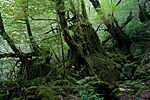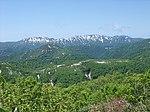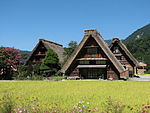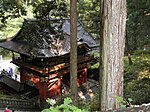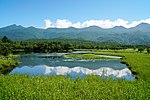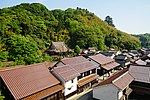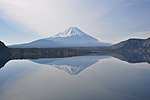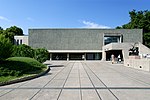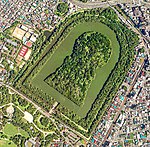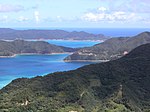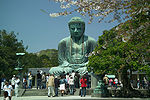List of World Heritage Sites in Japan
The United Nations Educational, Scientific and Cultural Organization (UNESCO) World Heritage Sites are places of importance to cultural or natural heritage as described in the UNESCO World Heritage Convention, established in 1972.[1] Cultural heritage consists of monuments (such as architectural works, monumental sculptures, or inscriptions), groups of buildings, and sites (including archaeological sites). Natural features (consisting of physical and biological formations), geological and physiographical formations (including habitats of threatened species of animals and plants), and natural sites which are important from the point of view of science, conservation or natural beauty, are defined as natural heritage.[2] Japan accepted the UNESCO World Heritage Convention on 30 June 1992.[3] As of October 2024, twenty-six properties have been inscribed on the World Heritage List: twenty-one cultural sites and five natural sites.[3] A further five sites and one site extension have been submitted for future inscription and were on the Tentative List as of 2017.[3]
World Heritage Sites
[edit]Tentative list
[edit]The Tentative List consists of sites previously nominated, but not yet inscribed.
Other UNESCO heritage lists
[edit]| UNESCO List | Exclusive entries of Japan |
Shared/multinational entries involving Japan |
Total |
|---|---|---|---|
| UNESCO World Network of Biosphere Reserves | 8 | — | 8 |
| UNESCO World Heritage List | 22 | 1 | 23 |
| UNESCO Memory of the World Register | 5 | 2 | 7 |
| UNESCO Global Geoparks Network | 10 | — | 10 |
| UNESCO Creative Cities Network | 8 | — | 8 |
| UNESCO Intangible Cultural Heritage Lists | 24 | — | 24 |
See also
[edit]- Cultural Properties of Japan
- National Treasures of Japan
- Cultural Landscapes of Japan
- National parks of Japan
- Kashimagari Tunnel
References
[edit]- ^ "The World Heritage Convention". UNESCO World Heritage Centre. Archived from the original on 27 August 2016. Retrieved 21 September 2010.
- ^ "Convention Concerning the Protection of the World Cultural and Natural Heritage". UNESCO World Heritage Centre. Archived from the original on 1 February 2021. Retrieved 3 February 2021.
- ^ a b c "Japan". UNESCO World Heritage Centre. Retrieved 20 November 2024.
External links
[edit]- (in Japanese) World Heritage Sites in Japan
- (in Japanese) Database of National Cultural Properties - World Heritage (世界遺産)




